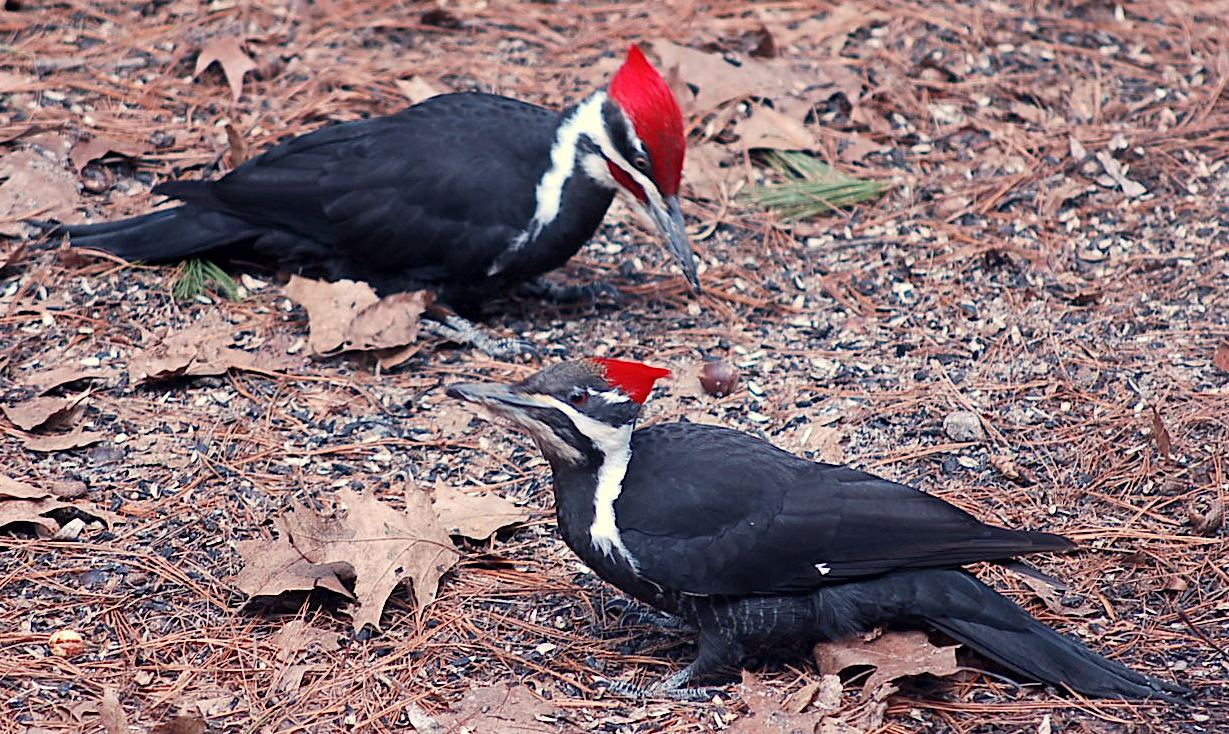Woodpeckers in Florida Population: Types Introduction and Preservation
Woodpeckers Unleashed: Checking Out the Marvels of These Skilled Tree Mountain Climbers
Woodpeckers, with their distinct markings and rhythmic drumming echoing via wooded locations, hold a special location in the avian world - Woodpeckers in Florida. As we dig right into the intricate details of woodpeckers' nesting behaviors, feeding methods, and the recurring preservation efforts to secure these impressive birds, a much deeper gratitude for their location in nature unravels.
Makeup and Adaptations
When examining the anatomy and adjustments of woodpeckers, one can observe impressive features that make it possible for these birds to thrive in their specialized ecological niche. In addition, woodpeckers have zygodactyl feet, with 2 toes dealing with onward and two dealing with backwards, providing a company grasp on tree trunks while they browse for food or drum for communication.
Furthermore, woodpeckers have a distinct tongue structure that is long, barbed, and sticky, enabling them to extract pests from gaps in wood. This customized adaptation allows woodpeckers to manipulate a food resource that is unattainable to many various other bird species. Overall, the makeup and adaptations of woodpeckers display the exceptional evolutionary remedies that have allowed these birds to prosper in their arboreal habitat.
Drumming Actions
Having checked out the composition and adjustments of woodpeckers, the focus currently moves to recognizing their drumming habits, a distinct element of their communication and territorial display screens. Drumming is an essential form of communication among woodpeckers, serving several purposes such as establishing territories, attracting mates, and signaling alarm system. Each woodpecker species has an unique drumming pattern that assists people acknowledge participants of their own types and identify them from competitors or predators.
Woodpeckers create drumming sounds by quickly pecking on powerful surface areas such as dead trees, utility posts, and even steel things, creating a series of balanced beats. The strength and speed of drumming can vary based upon the objective; for instance, a fast drumming series may symbolize aggressiveness towards trespassers, while a slower and softer drumming pattern can indicate courtship (Woodpeckers in Florida). Furthermore, woodpeckers might readjust the regularity and duration of their drumming to convey specific messages properly
Nesting Habits
Exploring the nesting practices of woodpeckers exposes remarkable insights into their reproductive habits and habitat options. Woodpeckers are recognized for their one-of-a-kind nesting preferences, commonly digging deep into dental caries in trees to create sheltered spaces for increasing their young. These cavities offer not just as a nesting website yet additionally as a safe and secure sanctuary from predators and harsh weather condition.
Woodpeckers show a high degree of fidelity to their nesting sites, usually going back to the exact same area time after time. This habits highlights the importance of appropriate habitat schedule for their reproductive success. The selection of a nesting site is vital for woodpeckers, with elements such as tree species, height, and degeneration phase playing significant roles in their decision-making process.
Surprisingly, some woodpecker varieties are known to excavate numerous tooth cavities within their area, offering themselves with alternative nesting choices. This strategy may read here function as a kind of insurance coverage against potential threats or disturbances to their main nesting site.

Feeding Techniques
Woodpeckers utilize a variety of specialized feeding methods to acquire their primary food sources. One of one of the most unique feeding habits of woodpeckers is drumming, which entails quick pecking on trees to uncover bugs underneath the bark. This drumming not only aids them locate victim yet additionally works as a way of interaction with other woodpeckers. Woodpeckers have strong, chisel-like beaks that allow them to drill into wood easily. As soon as an opening is developed, they utilize their lengthy, barbed tongues to extract insects such as ants, beetles, larvae, and spiders. These tongues are coated with sticky saliva that assists trap the victim. Woodpeckers are likewise known to excavate cavities in trees to access concealed insect larvae or sap. Some types, like the acorn woodpecker, store nuts in specially created holes called granaries. This tactical keeping of food assists them endure throughout food deficiency durations. Woodpeckers are genuinely exceptional in their feeding strategies, showcasing versatility and intelligence in procuring their nourishment.
Preservation Efforts
In the middle of the elaborate feeding techniques displayed by woodpeckers, the conservation initiatives targeted at protecting these fascinating birds play a vital function in maintaining their environments and populations. Woodpeckers face numerous dangers to their survival, including environment loss as a result of deforestation, environment modification altering their ecosystems, and collisions with man-made frameworks such as buildings and lorries - Woodpeckers in Florida. Guardians are actively functioning to resolve these difficulties and guarantee the long-lasting well-being of woodpecker varieties

Education and learning and public understanding campaigns are additionally crucial components of woodpecker preservation efforts. By elevating awareness regarding the importance of these birds in maintaining healthy and balanced woodland environments, conservationists can amass support for habitat conservation efforts and promote liable land management techniques. With joint efforts in between researchers, policymakers, and neighborhood neighborhoods, we can collaborate to safeguard a future where woodpeckers prosper in their all-natural environments.
Conclusion
